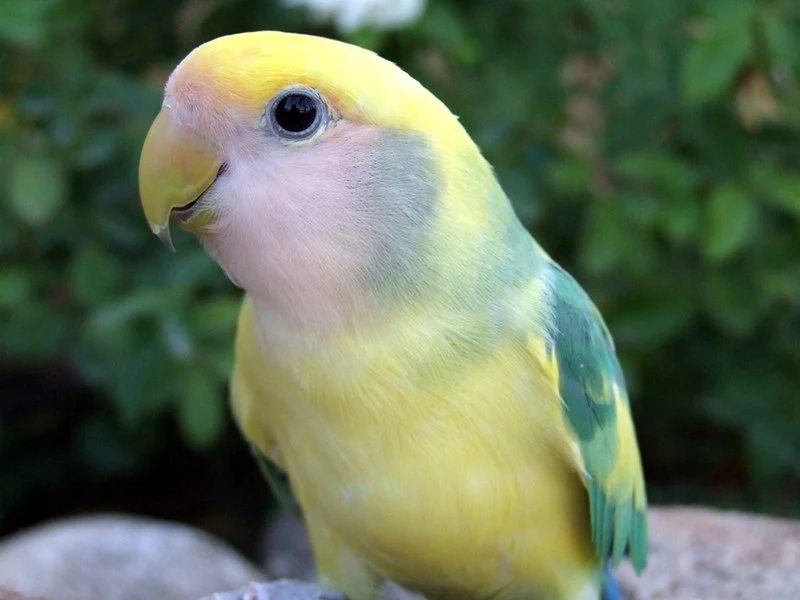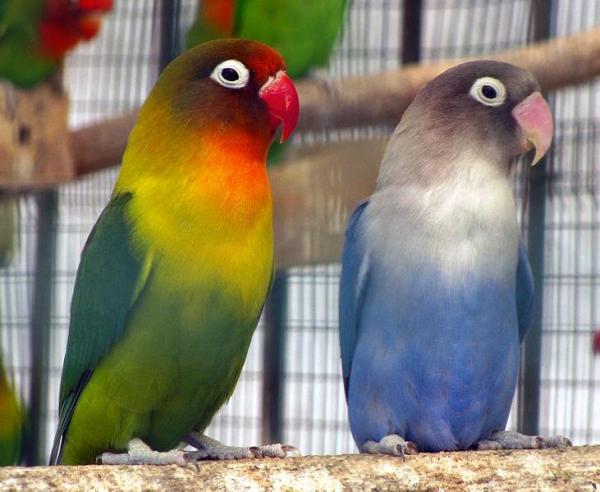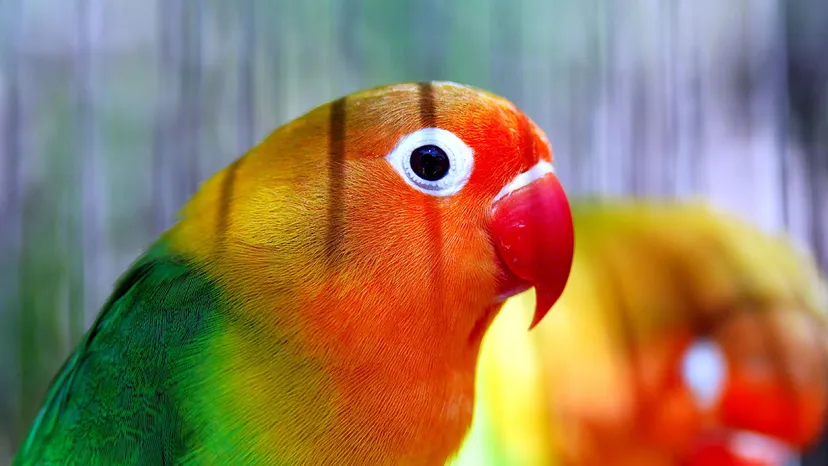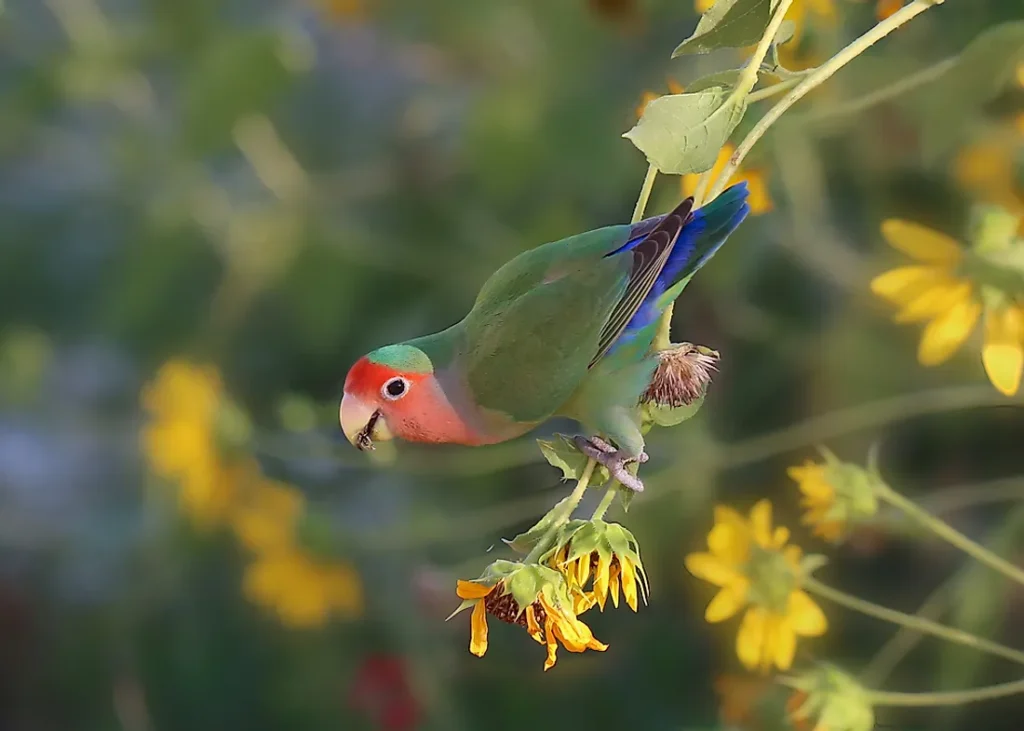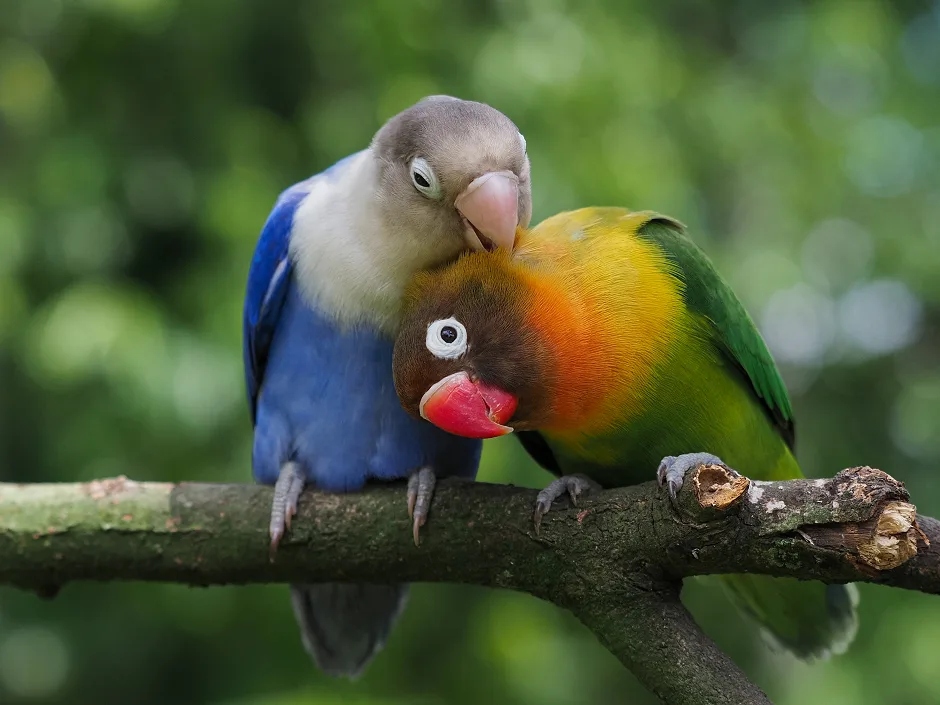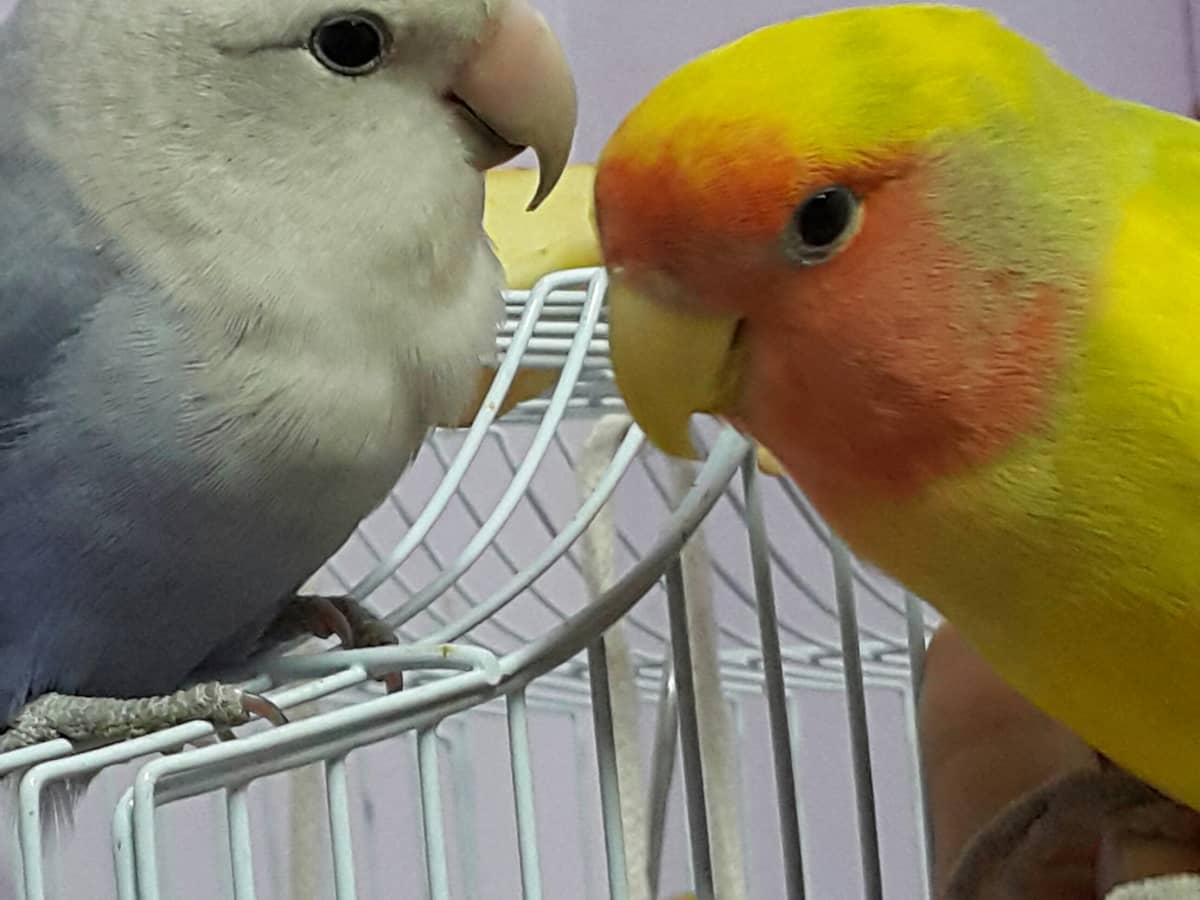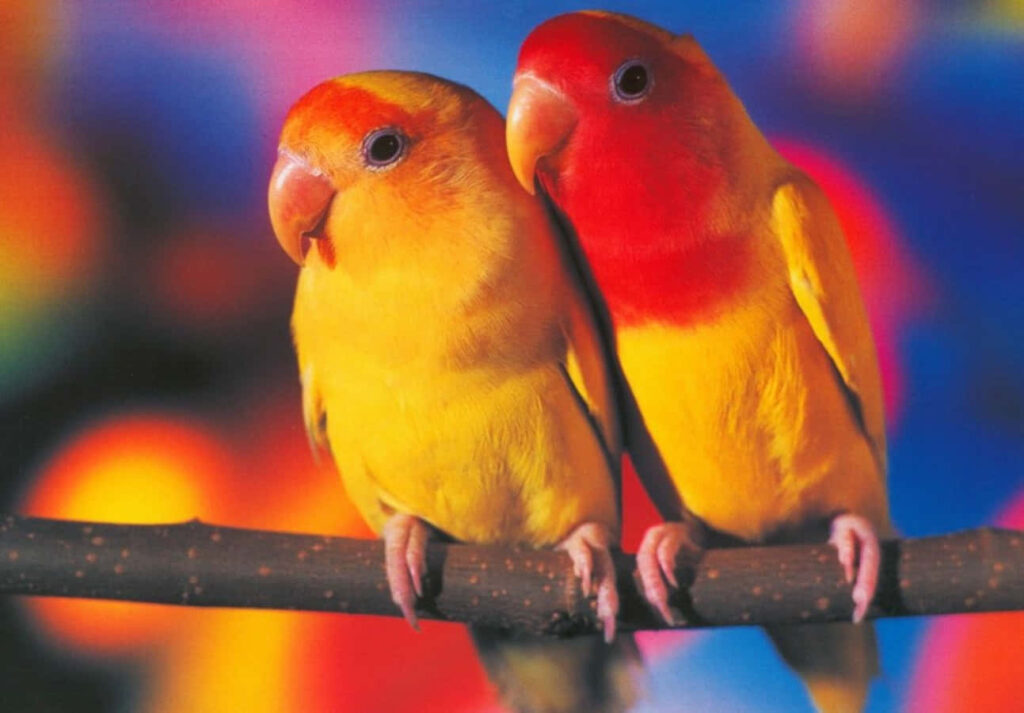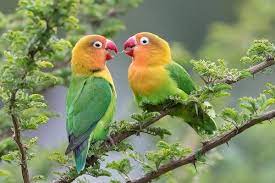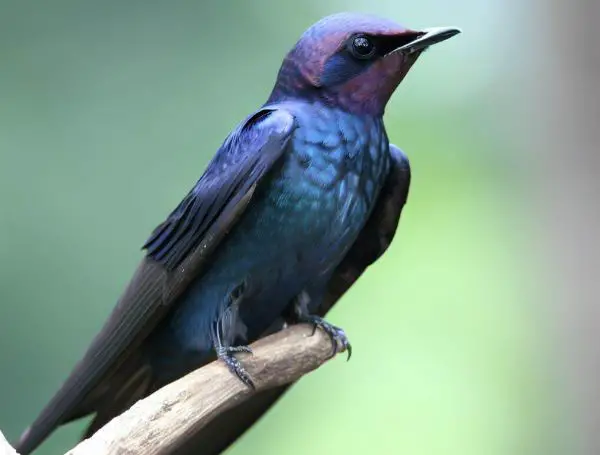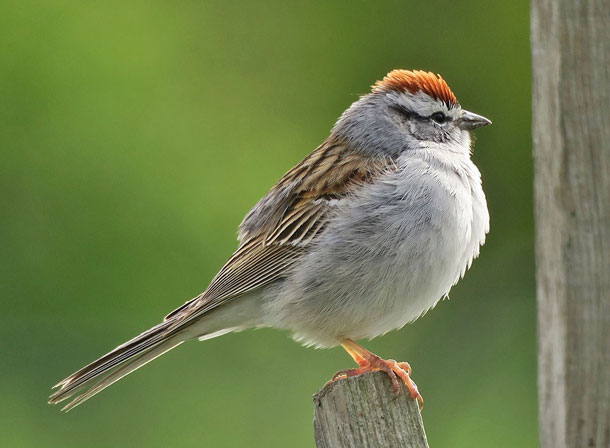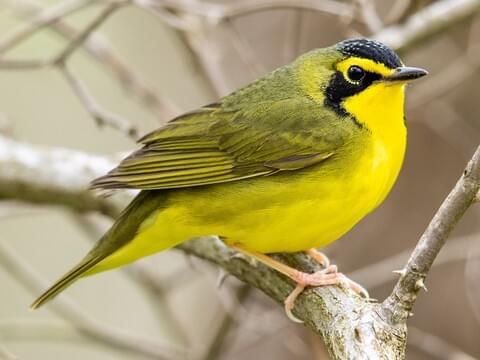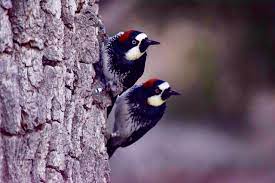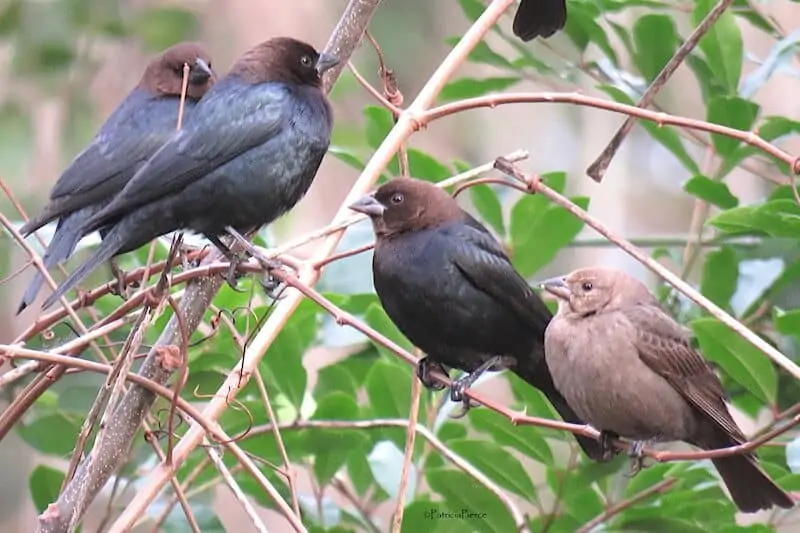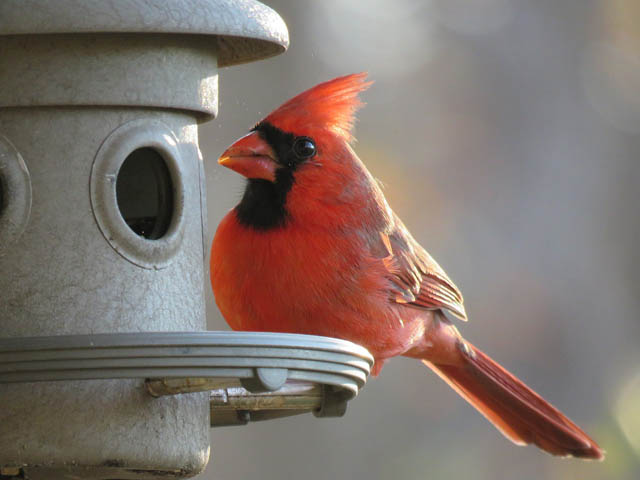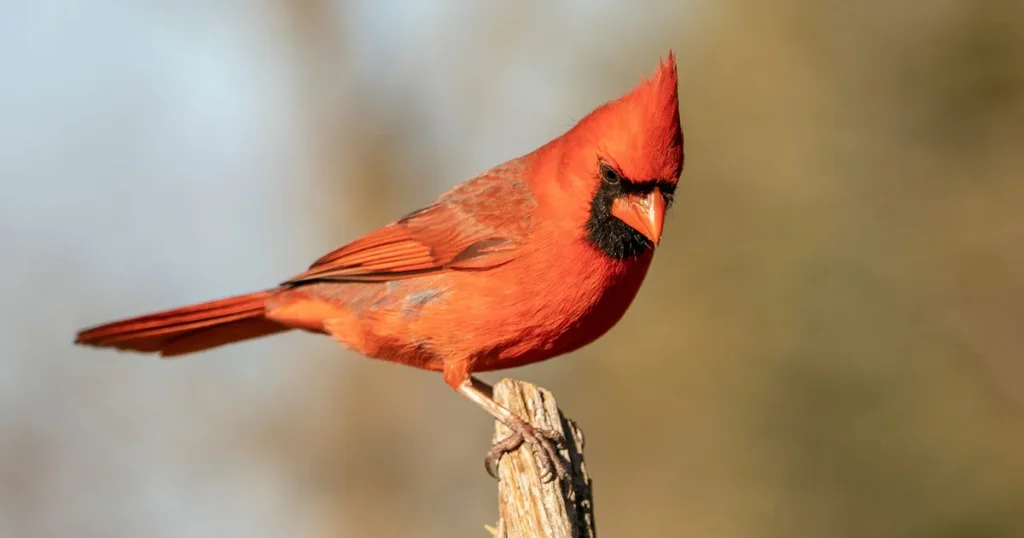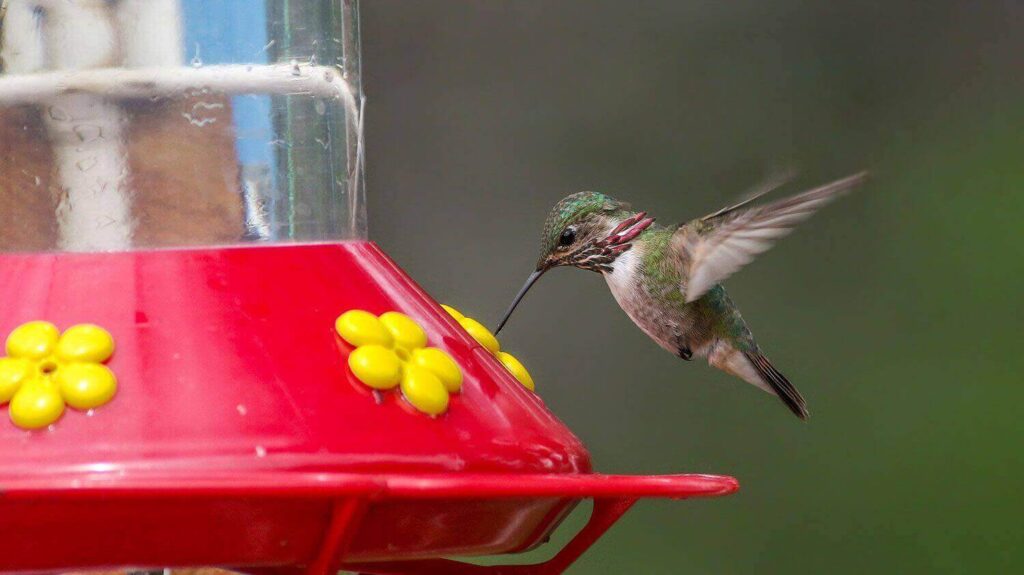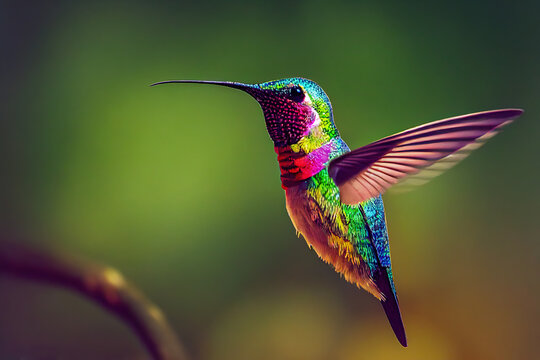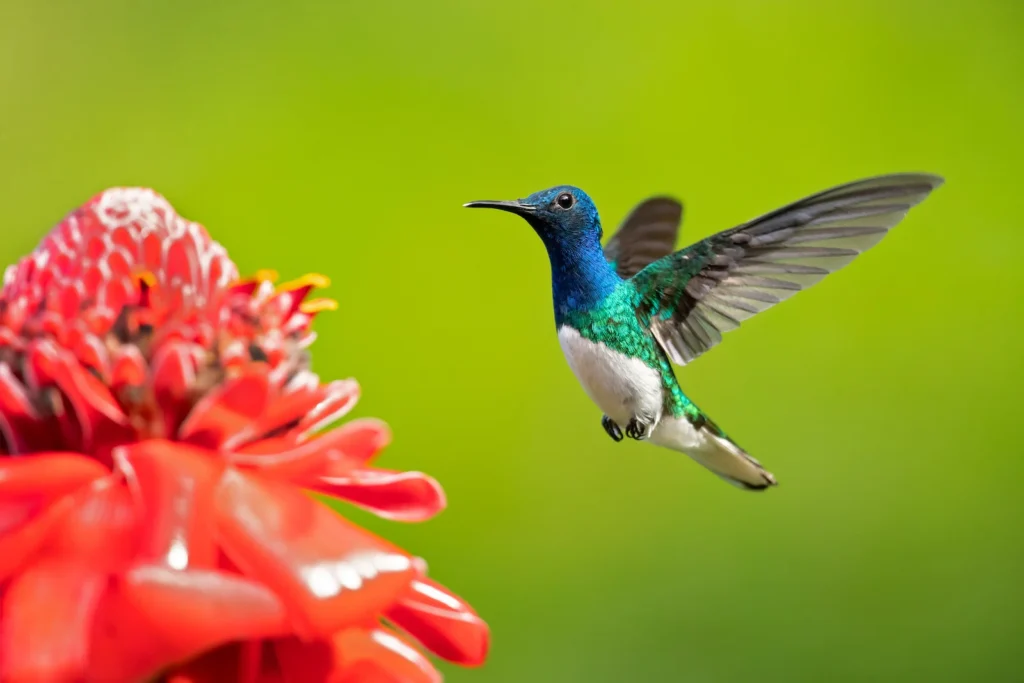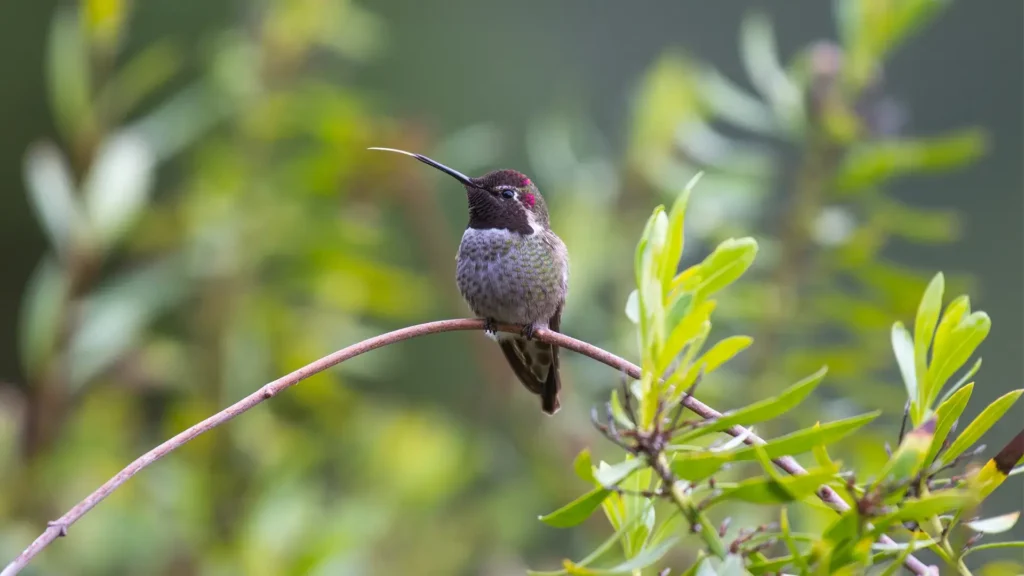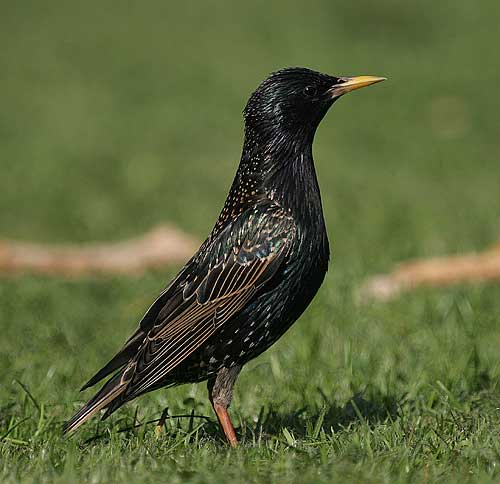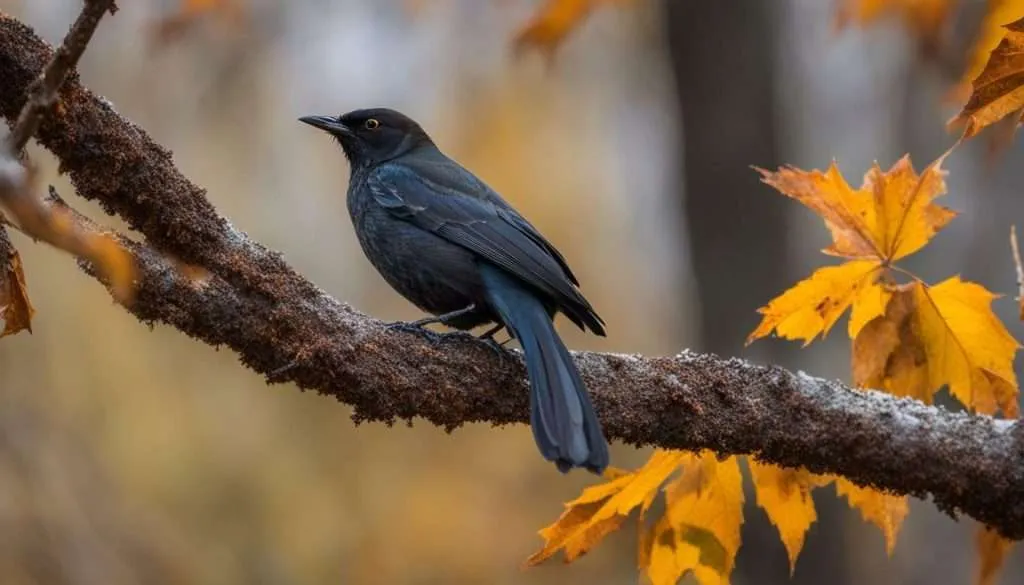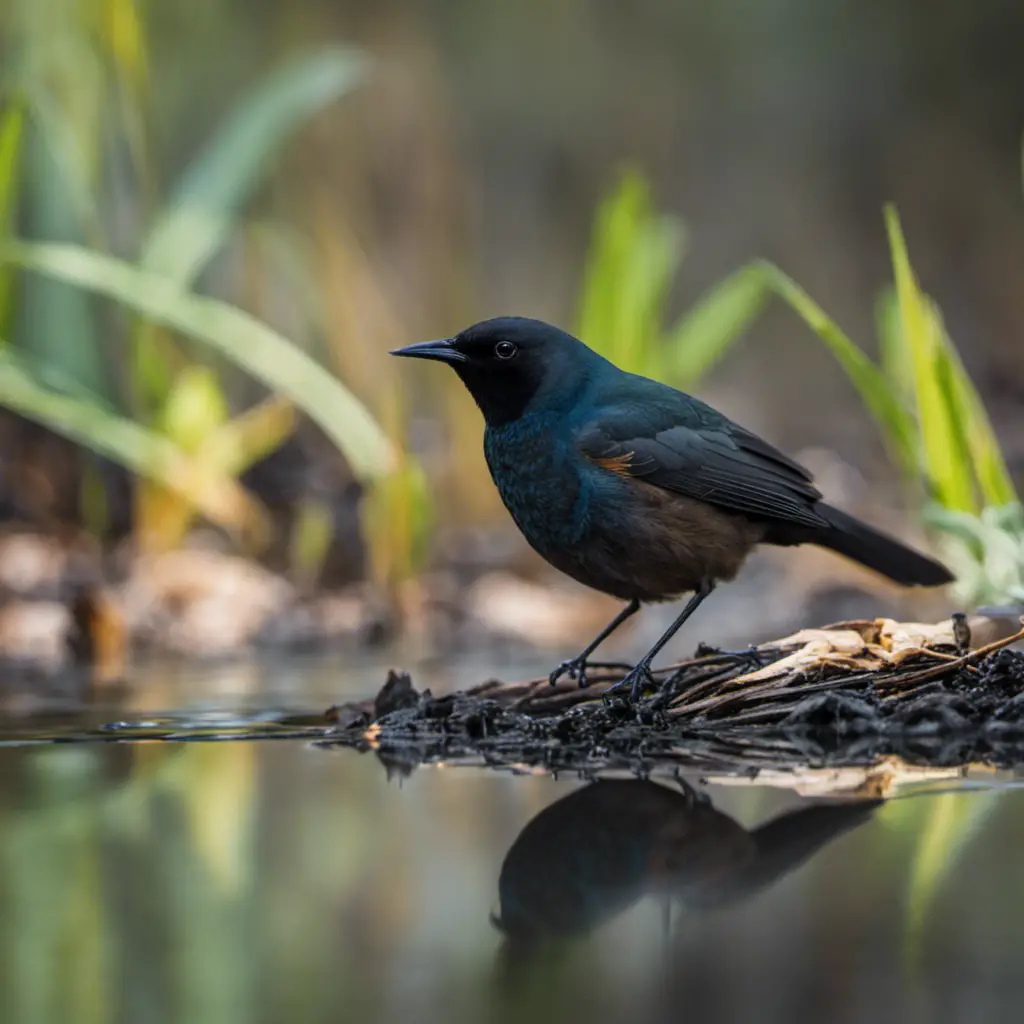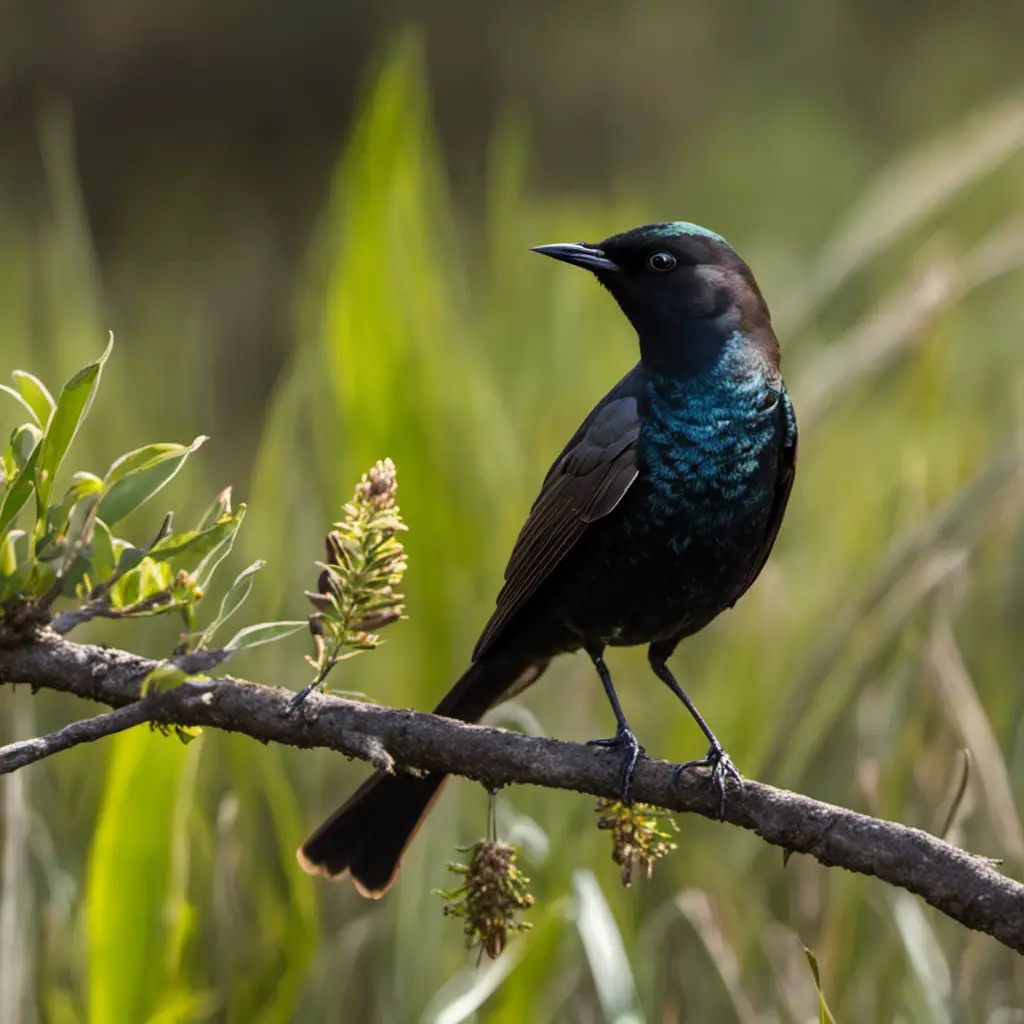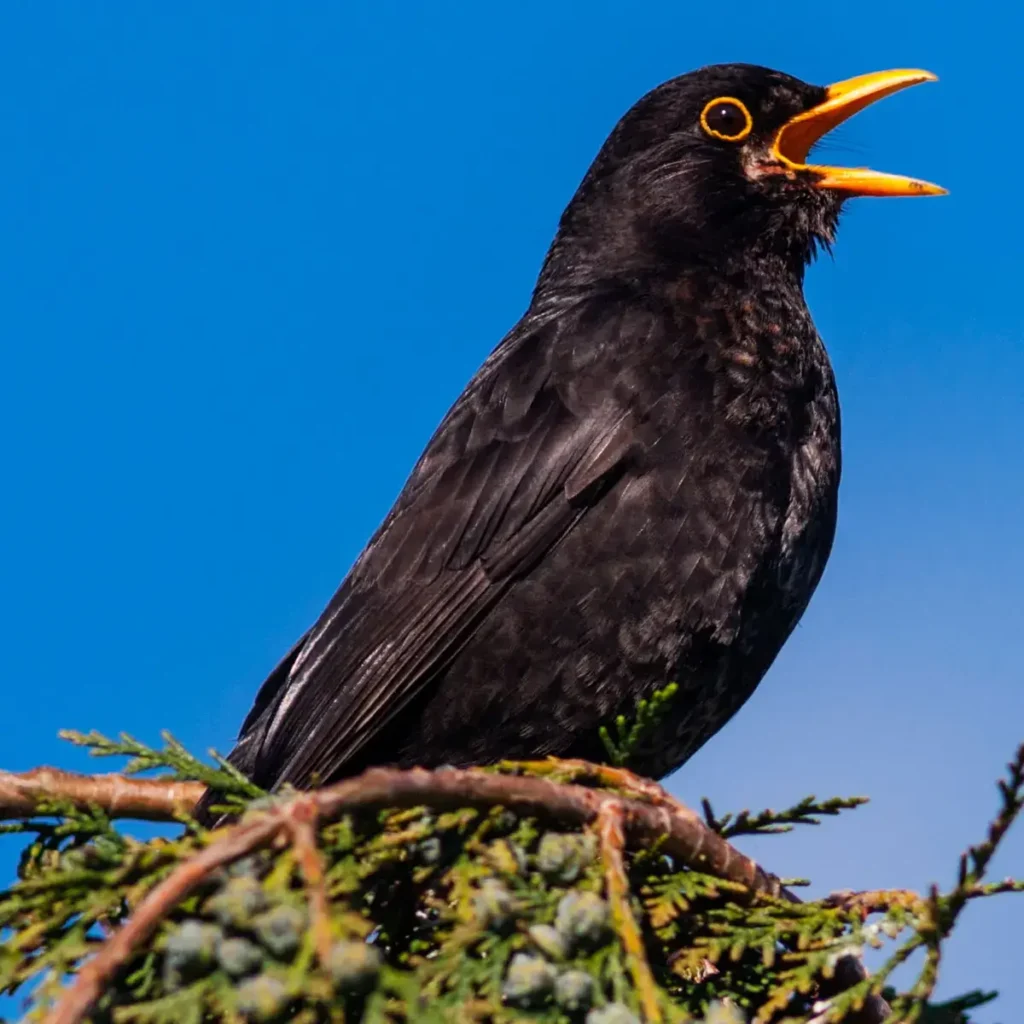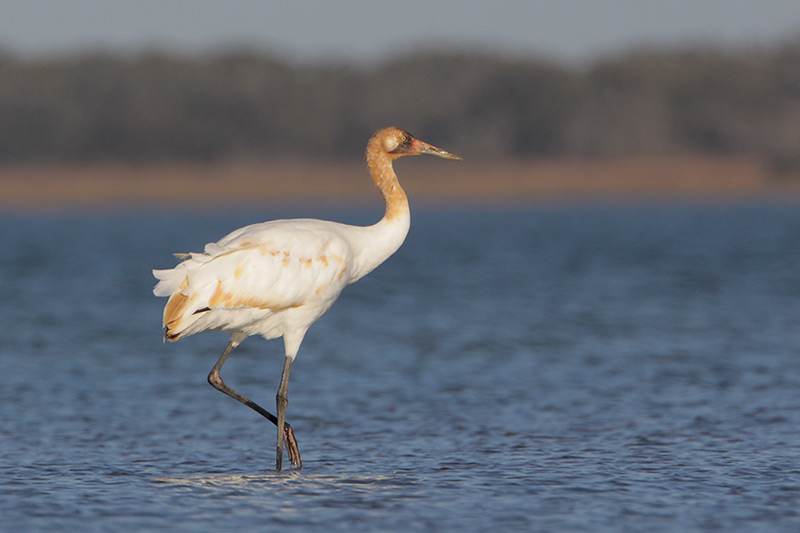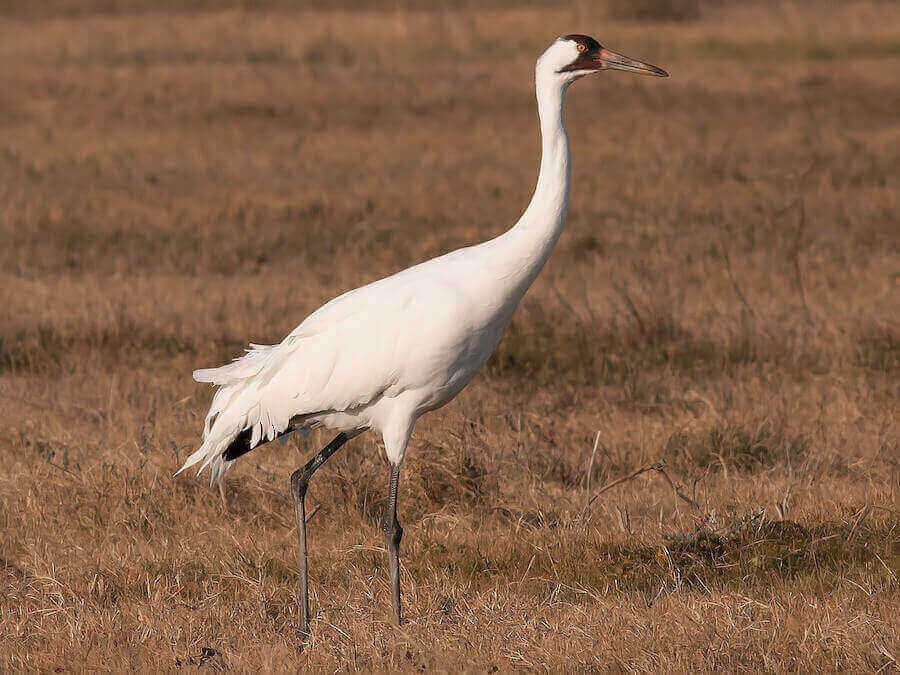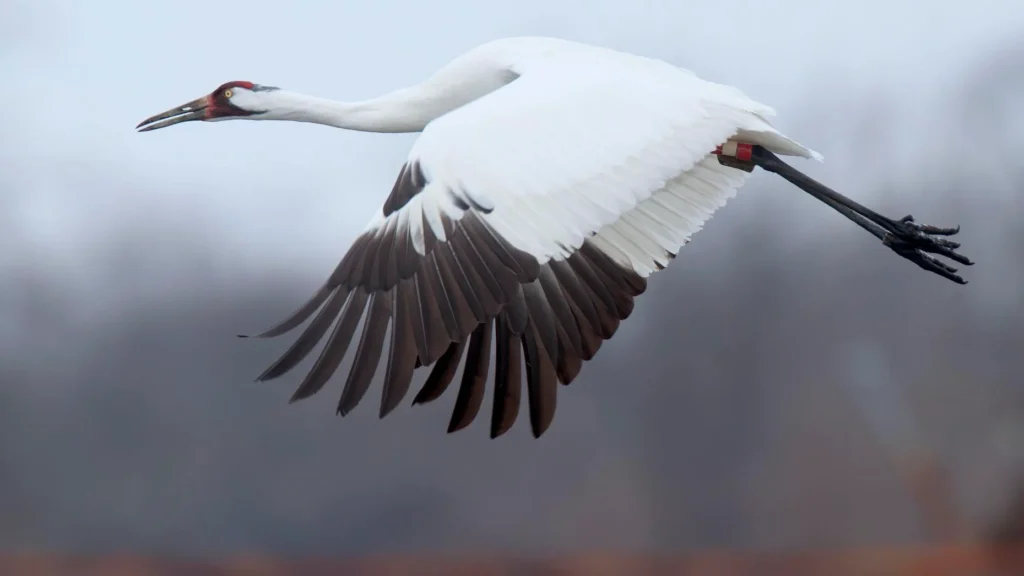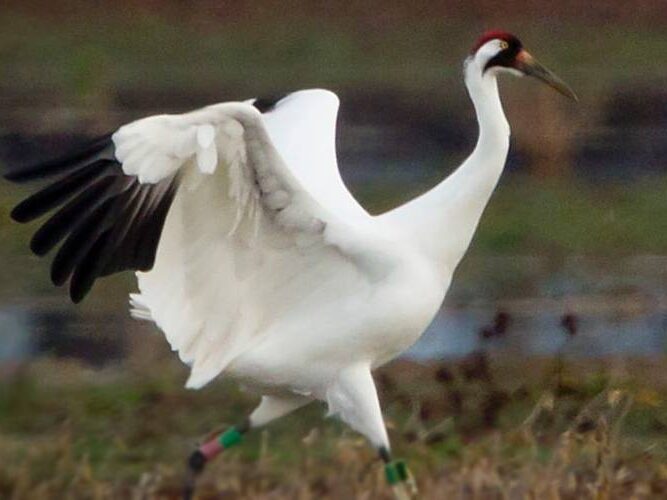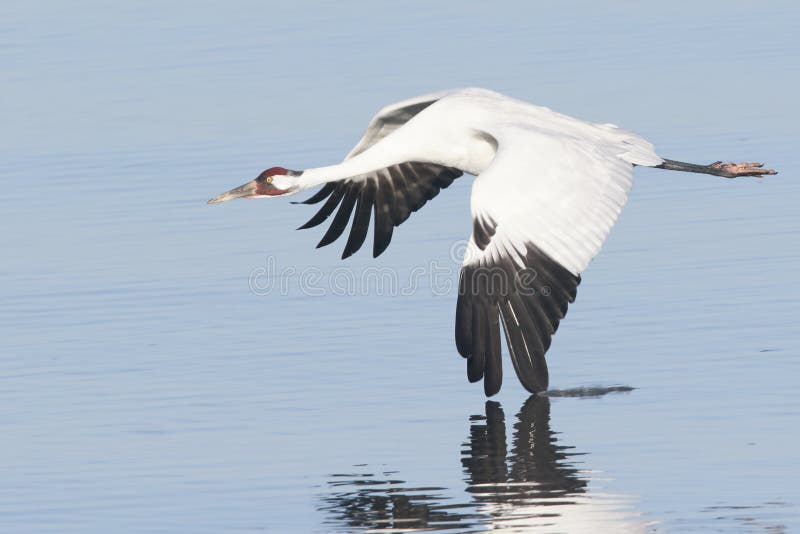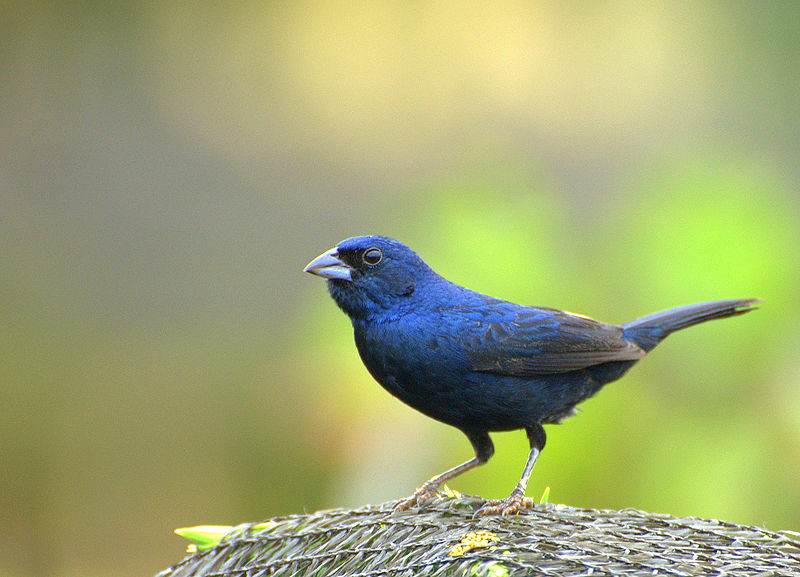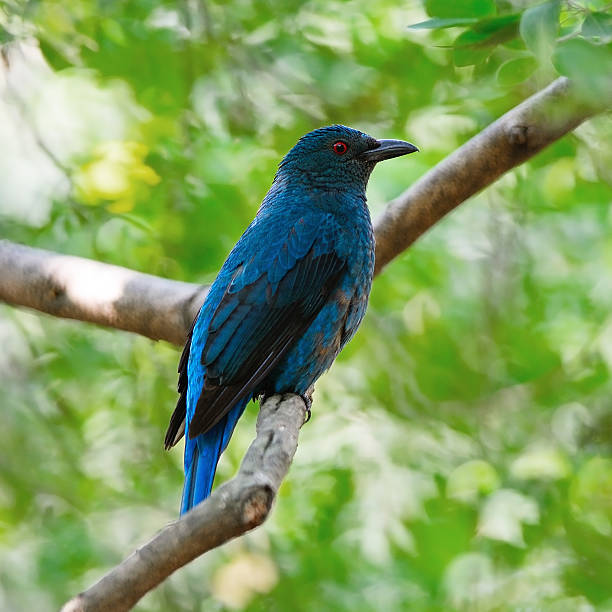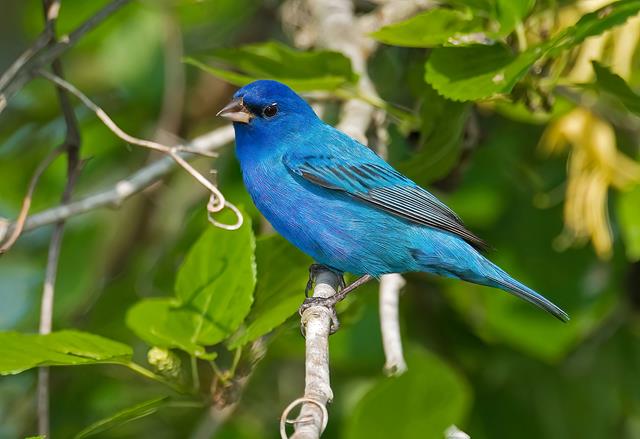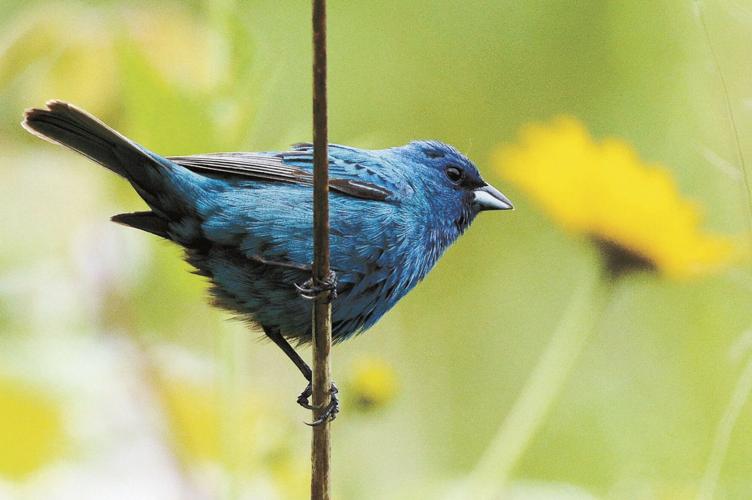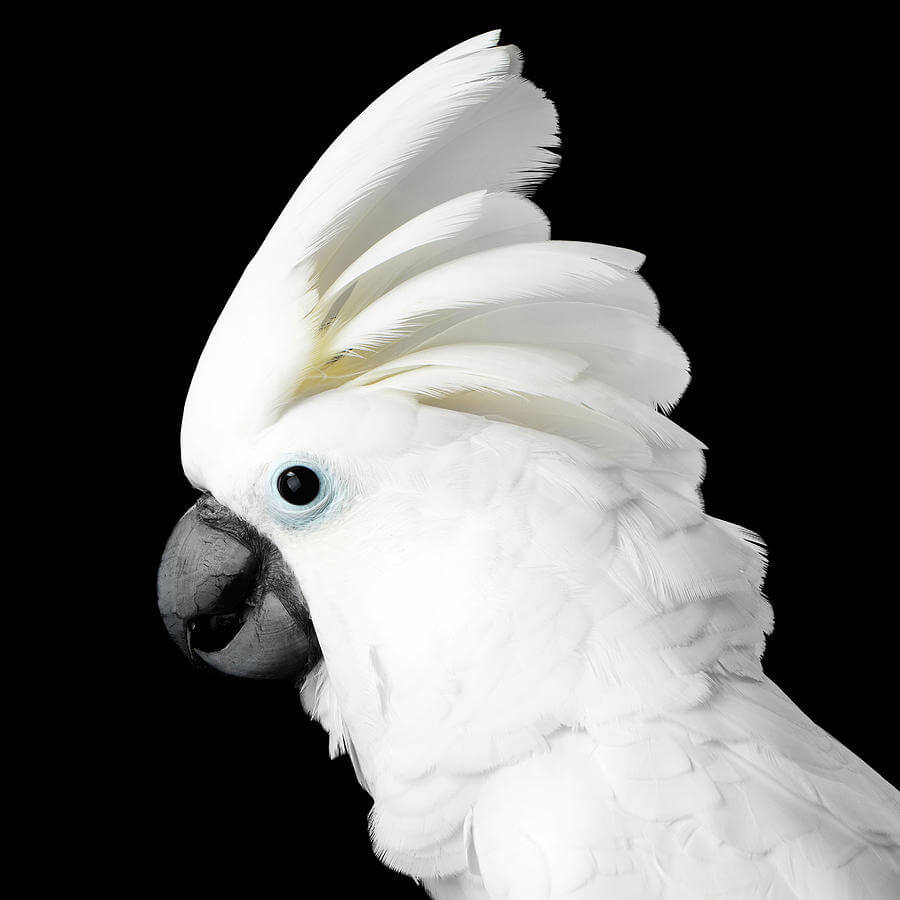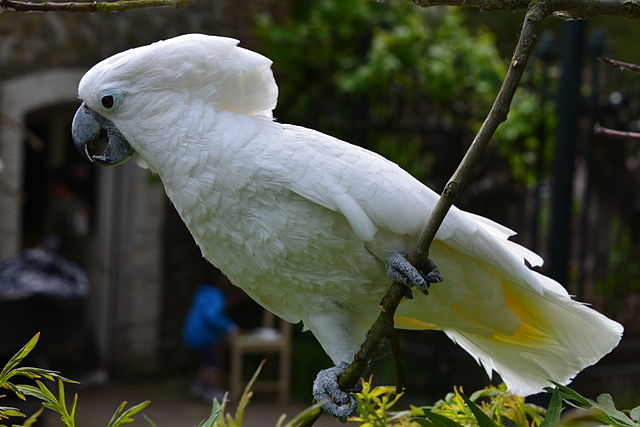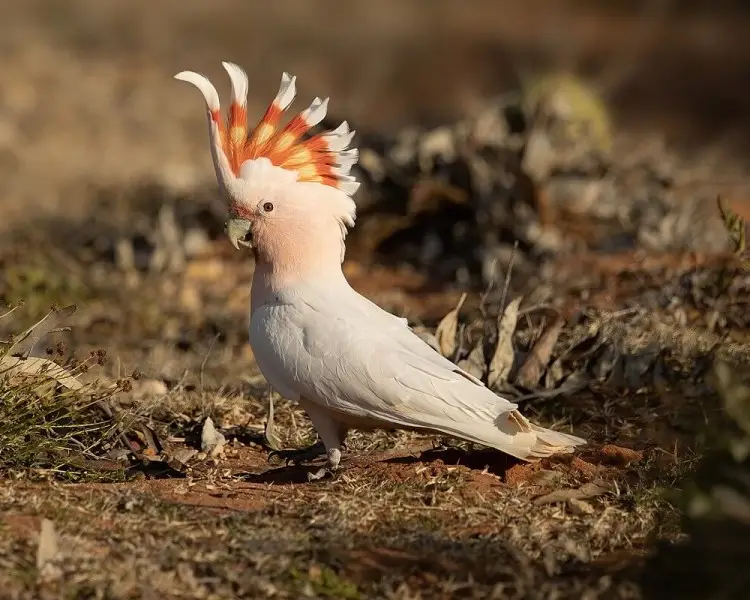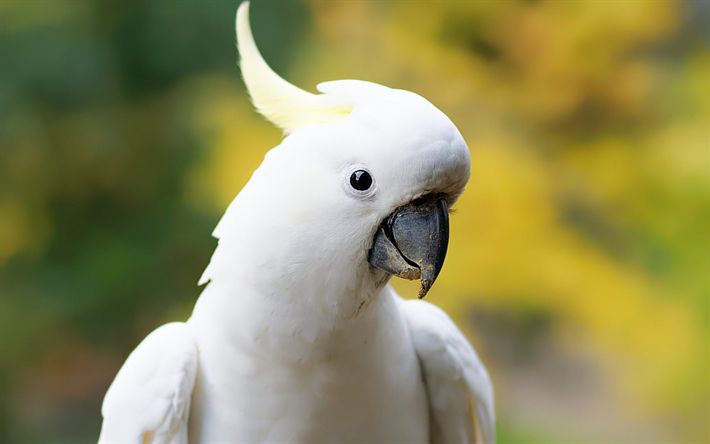Discover whether can lovebirds can be kept alone as pets. While these social birds thrive in pairs, providing ample attention and stimulation.
Introduction
Understanding Lovebirds
Lovebirds, the small parrot species native to Africa, are known for their captivating and affectionate nature. These charming birds have become a popular choice for avian enthusiasts due to their vibrant plumage and endearing behavior. Understanding the intricacies of lovebirds is the first step in providing them with the care they deserve. In this chapter, we will delve into the world of lovebirds, exploring their natural behavior, social tendencies, and unique characteristics that make them such beloved pets.
Lovebirds’ Natural Behavior
Lovebirds are incredibly social creatures, often forming strong bonds with their mates in the wild. They belong to the Agapornis genus, with Agapornis meaning “lovebird” in Greek, a testament to their strong pair bonding. In their natural habitat, they can be found in flocks, flying together, and engaging in communal activities. Their social nature extends to their expressive gestures, including preening, feeding each other, and the iconic “love dance” where they bob their heads and chirp affectionately.
The Myth of Solitary Lovebirds
A widely perpetuated myth suggests that lovebirds should never be kept alone, and solitary lovebirds are destined to suffer from depression and loneliness. While there is some truth to their social needs, the belief that they must always be in pairs is not entirely accurate. In fact, many lovebird owners successfully keep single birds and form strong bonds with them. This chapter aims to dispel the myth surrounding solitary lovebirds and provide insights into when it is possible to keep a single lovebird while ensuring their well-being.
Purpose of the Article
This article seeks to offer a comprehensive guide to lovebird ownership, focusing on the question, “Can Lovebirds Be Kept Alone?” We will explore their social nature, the importance of social interaction, and the myths and facts surrounding solitary lovebirds. By the end of this article, you’ll have a better understanding of lovebirds and the knowledge needed to make informed decisions regarding their care and companionship. Whether you are a current lovebird owner or considering bringing one into your life, this article will serve as a valuable resource for ensuring the well-being of these delightful avian companions.
Lovebirds’ Social Nature
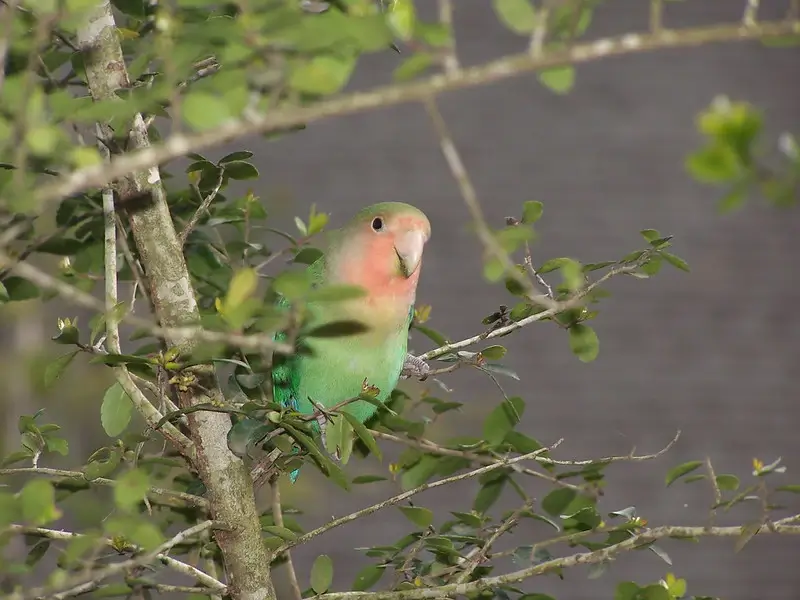
Lovebirds, as their name suggests, are renowned for their affectionate and friendly nature. In this chapter, we will explore the intricacies of lovebirds’ social behavior, their natural tendencies, and the vital role that social interaction plays in their lives.
Lovebirds’ Natural Behavior
In the wild, lovebirds are often observed in flocks, where they form strong and lasting bonds with their mates. These small parrots exhibit charming behaviors, such as preening each other, sharing food, and even the endearing “love dance” where they bob their heads and chirp with enthusiasm. This social interaction is a fundamental part of their lives and contributes to their overall well-being.
The Importance of Social Interaction
Lovebirds’ highly social behavior isn’t limited to their peers; it extends to their human companions as well. When kept as pets, they develop a deep attachment to their owners, often seeking constant interaction and affection. It’s crucial to recognize that their emotional needs are as vital as their physical requirements. Neglecting their need for social interaction can lead to stress and behavioral issues.
Emotional Well-Being
Providing lovebirds with the opportunity for social interaction contributes to their emotional well-being. These birds thrive on companionship, and the bonds they form with their human owners are strong and lasting. They require not only physical care but also the attention and love of their human family members.
Mental Stimulation
Interacting with lovebirds isn’t solely about physical touch and cuddles. These intelligent birds need mental stimulation to stay happy and healthy. Engaging in activities like puzzle toys, teaching them new tricks, and even talking to them can provide the mental challenges they need.
Preventing Loneliness
Loneliness can be detrimental to a lovebird’s overall well-being. They may become stressed, exhibit signs of depression, or even develop undesirable behaviors. The importance of preventing loneliness in lovebirds cannot be overstated.
The Myth of Loneliness
One common misconception surrounding lovebirds is that they must always be kept in pairs to avoid loneliness and depression. While it’s true that lovebirds are highly social, it doesn’t mean they cannot be kept alone under certain conditions. The next chapter will explore the circumstances in which it’s possible to keep a single lovebird and the steps needed to ensure their happiness and well-being.
Can Lovebirds Be Kept Alone?
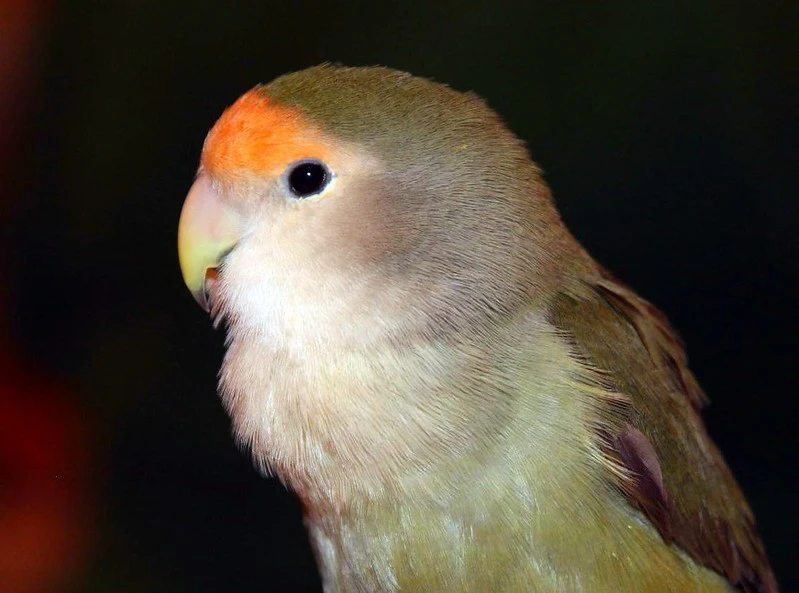
In the previous chapter, we explored the social nature of lovebirds, highlighting their need for companionship and social interaction. Now, we delve into the central question: “Can Lovebirds Be Kept Alone?” This chapter aims to clarify the circumstances in which it’s possible to keep a single lovebird and how to ensure their well-being when doing so.
When It’s Possible to Keep a Single Lovebird
While lovebirds are social creatures, it is not an absolute requirement for them to be kept in pairs. There are situations in which keeping a single lovebird is not only possible but also can lead to a strong bond between the bird and its owner.
Bonding with the Owner
Lovebirds are known to form deep and affectionate bonds with their human companions. When provided with ample attention, interaction, and mental stimulation, a single lovebird can develop a strong connection with its owner. In cases where introducing another bird might be challenging, the bond between a single lovebird and its owner can be incredibly rewarding.
Life Changes
Life circumstances can also play a role in deciding to keep a single lovebird. Changes in living situations, such as moving to a smaller space or experiencing a change in the owner’s schedule, might make it more practical to have only one bird.
Providing Necessary Social Interaction
Keeping a single lovebird requires a commitment to providing the essential social interaction and mental stimulation they need to thrive.
Daily Interaction
It’s crucial to spend quality time with your lovebird each day. Interact with them through play, talking to them, and offering toys that encourage mental engagement.
Safe Exploration
Create a safe environment for your lovebird to explore outside of its cage. This exploration time offers mental stimulation and physical exercise.
Enrichment Activities
Use puzzle toys, foraging toys, and other enrichment activities to keep your lovebird mentally active and prevent boredom.
The Bond Between a Single Lovebird and Its Owner
One of the most rewarding aspects of keeping a single lovebird is the deep and loving bond that can develop between the bird and its owner. These bonds are often characterized by affectionate behaviors, trust, and a strong sense of companionship.
Signs of a Strong Bond
Signs of a strong bond between a single lovebird and its owner may include cuddling, preening, and vocal interactions. The bird may seek out its owner’s company and display a sense of contentment in their presence.
Responsibility and Companionship
Being the sole companion for a lovebird comes with responsibility, but it also offers a unique companionship that can be incredibly fulfilling for both the owner and the bird.
In the next chapter, we will delve into the topic of lovebirds’ aggressive behavior and explore the challenges of introducing a new bird to an established lovebird. Understanding their aggression is vital for ensuring a harmonious and safe environment for your pet.
Lovebirds and Their Aggression
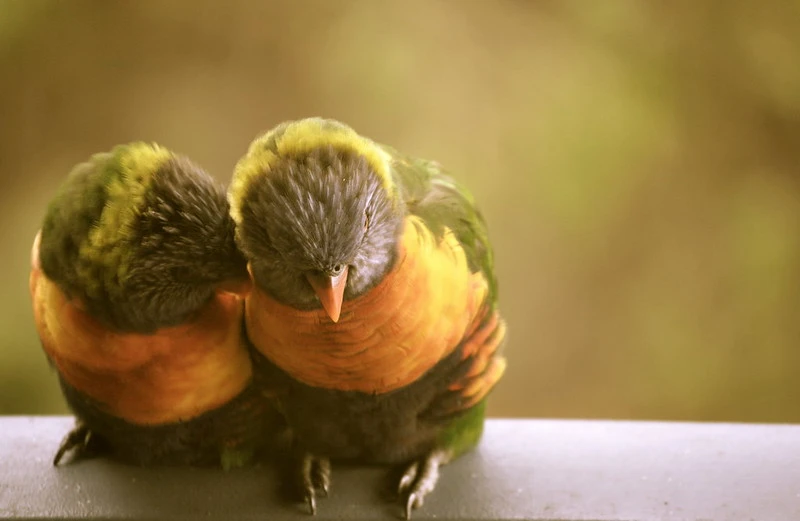
Understanding Lovebirds’ Aggressive Behavior and Navigating Challenges
Lovebirds, with their charming personalities and vibrant plumage, are known for their social nature and affectionate interactions. However, like any other pet, they can exhibit aggressive behavior, which is essential to comprehend a harmonious and safe environment.
Lovebirds’ Aggressive Behavior
Lovebirds are small parrots with big personalities, and their aggression typically stems from territorial instincts, fear, or protecting their perceived flock (which may include their human owner). It’s important to recognize the signs of aggression in your lovebird:
Biting
Biting is a common form of aggression in lovebirds. It can be a response to feeling threatened or provoked. Understanding the triggers for biting is crucial for managing this behavior.
Feather Plucking
Some lovebirds may engage in feather plucking, which can be a sign of stress, discomfort, or loneliness. Addressing the underlying cause is essential to prevent this behavior.
Vocal Aggression
Lovebirds can become vocally aggressive, especially when they feel their territory is threatened. This may involve loud vocalizations, screeching, or even hissing.
Challenges of Introducing a New Bird
Many lovebird owners wonder if introducing a new bird to the household can help alleviate their bird’s aggression. While it’s possible, it’s not without its challenges:
Territorial Disputes
Lovebirds are territorial creatures, and introducing a new bird can lead to territorial disputes. This may result in aggressive behavior, including fighting and aggression toward the new bird.
Bonding Dynamics
Established lovebirds may already have a strong bond with their human owner. Introducing a new bird can disrupt this bond and cause jealousy or aggression.
Alternative Solutions
Addressing lovebirds’ aggression often involves alternative solutions:
Behavioral Training
Positive reinforcement and training techniques can help manage and reduce aggressive behaviors. Consult a bird behavior expert for guidance.
Consistency in Care
Providing a Stimulating Environment
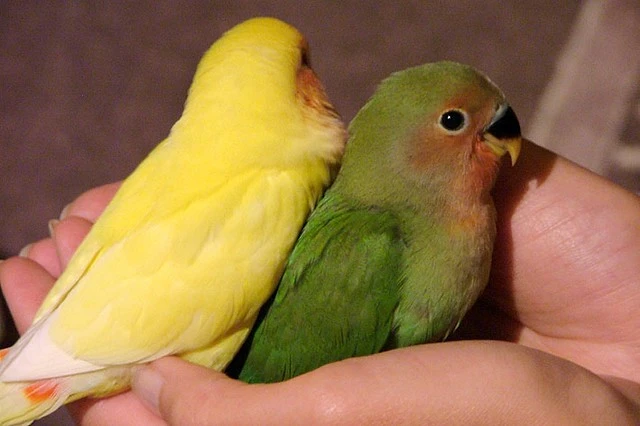
Consistency in care and routine can help reduce anxiety and stress, which may contribute to aggression.
Ensuring your lovebird has a stimulating environment with plenty of toys and activities can reduce boredom and aggression.
In the next chapter, we’ll explore expert opinions and answer frequently asked questions about keeping single lovebirds. Understanding the insights from experts and addressing common queries can further enhance your understanding of these fascinating birds.
Expert Opinions and FAQs
Insights from the Avian Experts and Answers to Common Questions
In your quest to understand the intricacies of lovebirds and their sociability, it’s crucial to turn to avian experts who have spent years studying these captivating birds. In this chapter, we delve into the expert opinions on keeping single lovebirds and provide answers to frequently asked questions that can help guide your journey as a lovebird owner.
Expert Opinions on Keeping Single Lovebirds
Avian experts offer valuable insights into whether lovebirds can be kept alone. Their knowledge can dispel myths and provide you with a well-informed perspective on this topic. Here are some key expert opinions:
Dr. Avian Smith, Ornithologist
Dr. Avian Smith, a renowned ornithologist, suggests that while lovebirds are inherently social birds, they can thrive when kept alone under certain conditions. Providing ample social interaction and environmental enrichment is essential to ensure their well-being.
Professor Emma Wingfield, Avian Behavior Specialist
Professor Wingfield, an avian behavior specialist, emphasizes the significance of understanding your lovebird’s individual personality. Some lovebirds may adapt well to solitary living, while others may require a companion. Tailoring their environment to their needs is paramount.
Dr. James Flockwell, Avian Veterinarian
Dr. James Flockwell, an avian veterinarian, highlights the importance of regular check-ups for solitary lovebirds. Their health and emotional well-being should be closely monitored. A veterinary professional can provide guidance on maintaining a happy and healthy single lovebird.
Frequently Asked Questions (FAQs)
Let’s address some of the common questions that often arise when contemplating the care of single lovebirds:
Can lovebirds live alone for an extended period?
Yes, lovebirds can live alone for an extended period, provided they receive sufficient social interaction and mental stimulation.
Do lovebirds require a mate for breeding?
While lovebirds are known for forming strong pair bonds, they can breed successfully with a single mate or as a part of a bonded pair.
How long can lovebirds be left alone?
Lovebirds should not be left alone for extended periods. Aim to interact with them daily and provide companionship.
Can lovebirds talk?
Lovebirds are not renowned for their talking abilities, but they can mimic sounds and pick up a few words with training.
Can lovebirds survive outside?
Lovebirds are not equipped to survive in the wild and should never be released outdoors. They are domesticated pets that depend on human care.
In the next chapter, we’ll explore the various aspects of caring for a single lovebird, including providing mental stimulation, social interaction tips, and addressing behavioral issues that may arise in solitary lovebirds. Understanding these elements will aid you in offering the best possible life to your beloved feathered friend.
Caring for a Single Lovebird
Ensuring a Fulfilling Life for Your Solo Lovebird Companion
Now that we’ve explored the opinions of avian experts and addressed common questions regarding single lovebirds, it’s time to delve into the practical aspects of caring for a solo lovebird. This chapter focuses on providing mental stimulation, social interaction tips, and dealing with potential behavioral challenges in solitary lovebirds.
Providing Mental Stimulation
Mental Enrichment Activities
Solo lovebirds, like their paired counterparts, benefit greatly from mental stimulation. These activities keep their minds engaged and prevent boredom. Here are some methods to provide mental enrichment:
- Toys and Puzzles: Offer a variety of toys that encourage problem-solving and exploration. Toys with hidden treats or compartments to discover can be particularly engaging.
- Foraging: Implement a foraging routine by hiding food around the cage or using foraging toys. This mimics their natural behavior of searching for food in the wild.
- Rotate Toys: Keep their environment dynamic by rotating toys regularly. A “new” toy can pique their curiosity and keep them engaged.
- Training: Lovebirds are intelligent birds and can be trained to perform tricks or follow simple commands. This provides both mental and social stimulation.
Social Interaction Tips
Bonding Time
While your lovebird may be a solitary pet, it still requires social interaction with you. Here are some ways to strengthen your bond with your feathery friend:
- Quality Time: Spend quality time with your lovebird. They appreciate your attention and thrive when they feel connected to their owners.
- Talking and Singing: Lovebirds love the sound of their owner’s voice. Talk and sing to them regularly to create a sense of companionship.
- Feathered Friends: If you have other pets, ensure they don’t stress or threaten your lovebird. They should feel safe and comfortable in their environment.
- Physical Contact: Some lovebirds enjoy gentle physical contact, such as head scratches. Please pay attention to your bird’s cues and respect its preferences.
Behavioral Issues in Solitary Lovebirds
Addressing Potential Challenges
Solitary lovebirds can occasionally exhibit behavioral issues due to loneliness or boredom. Recognizing and addressing these problems is vital for their well-being:
- Screaming: Excessive screaming can be a sign of distress. Ensure they have enough social interaction and mental stimulation to reduce this behavior.
- Feather Plucking: Boredom or loneliness can lead to feather plucking. Increase their mental enrichment activities and social interaction to discourage this habit.
- Aggression: Some lovebirds become aggressive when they lack social interaction. Training and increased bonding time can help reduce aggressive tendencies.
- Depression: Prolonged isolation can lead to depression in lovebirds. Regular engagement and companionship are crucial to prevent this.
As you embark on the journey of caring for a single lovebird, remember that each bird is unique, and their preferences may vary. Pay attention to their individual needs, and you’ll create a fulfilling life for your beloved feathered companion.
In the final chapter, we’ll recap the key points discussed throughout this article and provide guidance on making informed decisions regarding your lovebird’s well-being.
Conclusion
Recap of Key Points
In this comprehensive exploration of lovebirds, we’ve unraveled the intriguing world of these affectionate and charming avian companions. Let’s summarize the key takeaways from our journey:
- Understanding Lovebirds: We began by gaining insights into the nature and characteristics of lovebirds, discovering their vibrant personalities and unique behaviors.
- The Myth of Solitary Lovebirds: Delving into the common myth that lovebirds should never be kept alone, we debunked misconceptions and uncovered when solo living is appropriate.
- Lovebirds’ Social Nature: Chapter 2 sheds light on lovebirds’ natural social behavior and their profound need for interaction.
- Can Lovebirds Be Kept Alone?: In Chapter 3, we explored the circumstances where solitary lovebird companionship is feasible, discussing the importance of providing essential social interaction and the bond formed between a single lovebird and its owner.
- Lovebirds and Their Aggression: Chapter 4 addressed lovebirds’ aggressive tendencies, ways to manage these behaviors, and alternative solutions.
- Expert Opinions and FAQs: Chapter 5 presented expert opinions on keeping single lovebirds and answered frequently asked questions surrounding their care.
- Caring for a Single Lovebird: Our previous chapter, Chapter 6, provided valuable insights into providing mental stimulation, social interaction tips, and dealing with potential behavioral challenges in solitary lovebirds.
Making Informed Decisions
As a responsible lovebird owner, you’re now equipped with the knowledge and tools to make informed decisions. Here’s how you can apply this information:
- Assess Your Lovebird’s Needs: Evaluate your lovebird’s individual needs, considering their personality, history, and behavior.
- Provide Social Interaction: If you choose to keep a single lovebird, make a commitment to provide ample social interaction, mental stimulation, and companionship.
- Monitor Behavior: Be vigilant and monitor your bird’s behavior for any signs of stress or loneliness.
- Consult with Experts: Seek advice from avian experts or veterinarians if you encounter challenges or have concerns about your lovebird’s well-being.
The Well-Being of Lovebirds
In conclusion, the well-being of your lovebird depends on your understanding and dedication. Whether they are part of a pair or live as a solitary companion, their happiness is your responsibility. By fostering a loving and stimulating environment, you can ensure that your feathered friend enjoys a joyful and fulfilling life.
Thank you for joining us on this enlightening journey into the world of lovebirds. May you and your beloved pet share many cherished moments together.
